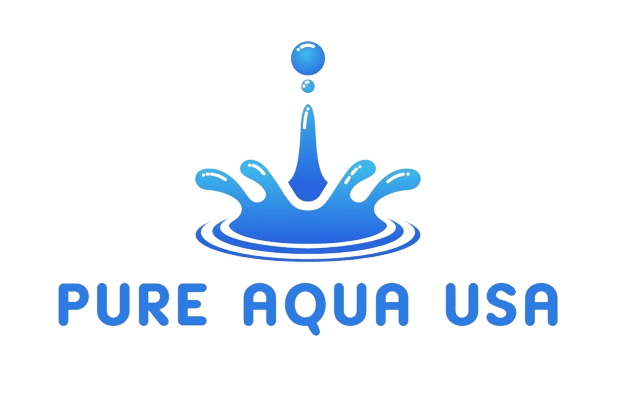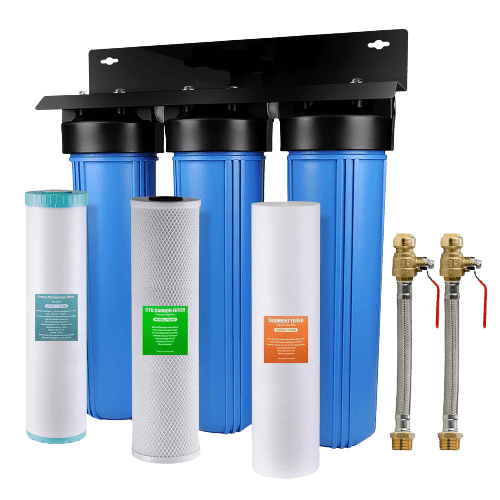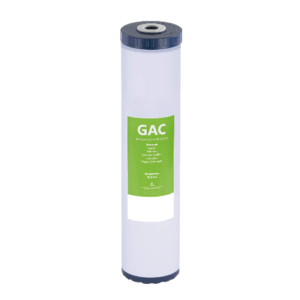Your cart is currently empty!
Whole-House Filtration Systems
A whole-house water filtration system is a comprehensive water treatment solution that ensures clean, safe, and great-tasting water for drinking, bathing, cooking, and other household uses. This system is installed at the main water entry point, providing purified water to every faucet and appliance throughout the entire home. By effectively removing contaminants such as sediments, chlorine, and other impurities, a whole-house water filtration system offers convenience, health benefits, and protection for plumbing and appliances.
- Description
- Comparing Whole House to Salt Free Systems
- Installation
- Replacement Parts
- Q&A
- Advantages and Disadvantages
- Applications
- Downloads
- Drawings
- Reviews (0)
Description
A Whole-House Filtration Systems is an important investment for many homeowners looking to improve the quality of their water supply. With various contaminants, such as sediments, chlorine, heavy metals, and other impurities present in tap water, a whole-house water filtration system can provide clean, safe, and great-tasting water for drinking and everyday use throughout the entire home.
One of the primary benefits of a Whole-House Filtration Systems is the convenience and peace of mind it offers. Rather than installing individual filters on faucets or using pitcher filters, a whole-house system ensures that all water used in the home is purified. This means that not only is the drinking water safe, but also the water used for cooking, bathing, and washing dishes and clothes. Furthermore, by removing contaminants, the system can prevent potential damage to appliances and plumbing systems, leading to cost savings in the long run.
When choosing a Whole-House Filtration Systems, it’s important to consider the specific needs of your household and the quality of your water supply. There are various types of filtration systems available, including sediment filters, activated carbon filters, reverse osmosis systems, and UV filters. Each type of filter addresses different contaminants and has its own set of advantages and limitations.
Sediment filters are effective in removing large particles such as sand, silt, and rust from the water. These filters typically use a physical barrier, such as a porous material, to trap the particles and prevent them from entering the plumbing system. Activated carbon filters, on the other hand, are designed to absorb chemicals and impurities, including chlorine, volatile organic compounds (VOCs), and some heavy metals. These filters can improve the taste and odor of water, making it more palatable for drinking and cooking.
Reverse osmosis systems are known for their exceptional water purification capabilities. By using a semipermeable membrane, these systems can remove a wide range of contaminants, including dissolved solids, nitrates, and lead. While reverse osmosis systems are highly effective, they typically produce a smaller amount of purified water and generate wastewater, requiring additional consideration during installation.
UV filters utilize ultraviolet light to disinfect water by inactivating bacteria, viruses, and other microorganisms. This method of water treatment is chemical-free and can be an excellent addition to a whole-house filtration system, particularly for homes that rely on well water or other untreated water sources.
When installing a Whole-House Filtration Systems, proper maintenance is crucial to ensure optimal performance and prolong the lifespan of the system. Regular filter replacements, system checks, and professional servicing can help maintain water quality and prevent malfunctions.
In conclusion, a whole-house water filtration system can significantly improve the overall quality of water in a home, providing health benefits, cost savings, and peace of mind. By selecting the right type of filtration system and implementing proper maintenance, homeowners can enjoy clean, safe, and great-tasting water throughout their entire residence.
When considering a Whole-House Filtration Systems, it’s essential to delve into the specific features and considerations that can influence your decision-making process. Here are some detailed aspects to consider:
- Water Quality Analysis: Before choosing a whole-house water filtration system, it’s important to have a clear understanding of your water quality. Conducting a water analysis can help identify the contaminants present in your water supply. This analysis can be done by hiring a professional or using DIY test kits. The results will guide you in selecting the most suitable filtration system for your needs.
- Flow Rate and Capacity: Understanding the water usage patterns in your household is crucial when selecting a filtration system. Consider the flow rate and capacity of the system to ensure it can meet the demands of your household without compromising water pressure or quality. Factors such as the number of bathrooms, appliances, and occupants will influence the required flow rate and capacity.
- Filtration Technology: Different filtration technologies address specific contaminants. For example, if your water contains high levels of sediment, a system with a sediment filter is essential. Alternatively, if taste and odor issues are prevalent, an activated carbon filter can effectively address these concerns. Understanding the type of contaminants in your water will help you choose the appropriate filtration technology.
- Maintenance Requirements: Each type of filtration system comes with its own maintenance needs. Consider the frequency and ease of filter replacement, as well as any additional maintenance tasks required to keep the system operating efficiently. Understanding the maintenance requirements can help you plan for ongoing upkeep and ensure consistent water quality.
- Installation Considerations: The installation process for a whole-house water filtration system can vary based on the type of system chosen. Some systems may require professional installation, while others are designed for straightforward DIY installation. Consider the space available for the system, as well as any plumbing modifications that may be necessary during installation.
- Water Waste: Depending on the type of filtration system, there may be water waste to consider. For example, reverse osmosis systems produce wastewater during the filtration process. Understanding the water waste associated with a particular system can help you make an environmentally conscious decision and plan for proper wastewater disposal.
By considering these detailed aspects when selecting a Whole-House Filtration Systems, you can make an informed decision that aligns with the specific needs of your household and ensures the delivery of clean, safe, and great-tasting water throughout your entire home.
Comparing Whole House to Salt Free Systems
Whole house water filtration systems and salt-free water softeners serve different purposes, but they can both contribute to improved water quality in a home. Here’s a comparison of the two:
Whole House Water Filtration Systems:
Purpose: Whole-house water filtration systems are designed to remove a wide range of contaminants and impurities from the water supply, including sediment, chlorine, pesticides, heavy metals, and more. They improve the overall quality and taste of the water, making it safe and enjoyable for all uses, including drinking, cooking, bathing, and cleaning.
Benefits: These systems provide comprehensive water treatment throughout the entire home, ensuring that every faucet and appliance receives clean, filtered water. They can address a variety of water quality issues, making them well-suited for households with diverse water concerns.
Maintenance: Regular maintenance, such as replacing filter cartridges, is necessary to ensure the continued effectiveness of the filtration system. The frequency of maintenance depends on usage and the specific filtration media used.
Salt-Free Water Softeners:
Purpose: Salt-free water softeners are designed to address the issue of hard water by preventing scale buildup and reducing the negative effects of mineral deposits on pipes, fixtures, and appliances. They do not actually remove the minerals that cause hardness but rather change their form so that they do not adhere to surfaces.
Benefits: These systems provide a sustainable and environmentally friendly solution for treating hard water, without the need for salt or chemicals. They help extend the lifespan of plumbing and appliances, and they can also contribute to energy savings by enhancing the efficiency of water heaters and other devices.
Maintenance: Salt-free water softeners generally require minimal maintenance, as they do not use salt or undergo regeneration cycles. They are often seen as a low-maintenance alternative to traditional salt-based water softeners.
In summary, whole-house water filtration systems are focused on removing a broad range of contaminants from the water, while salt-free water softeners are specifically designed to address the issue of hard water without introducing additional sodium into the water supply. Depending on the specific water quality concerns and goals of a household, either or both systems may be beneficial for ensuring clean, safe, and quality water throughout the home.
Combining whole house water filtration with a salt-free water softening system can offer comprehensive water treatment for a home, addressing both the removal of contaminants and the mitigation of hard water issues.
Here’s how they can be effectively integrated into a single system:
Sequential Installation: In a combined system, the whole house water filtration unit is typically installed first in the water supply line entering the home. This ensures that the water is thoroughly filtered to remove contaminants before it reaches the salt-free water softener.
Water Filtration: The whole house water filtration system effectively removes sediment, chlorine, pesticides, and other impurities, providing clean, filtered water for the entire household. This ensures that all water uses, including drinking, cooking, bathing, and laundry, benefit from improved water quality.
Salt-Free Water Softening: Following the water filtration stage, the water flows to the salt-free water softener, where it undergoes the process of Template Assisted Crystallization (TAC). This helps prevent the buildup of scale and reduces the impact of mineral deposits, effectively treating the water for hardness without the need for salt or chemicals.
Comprehensive Water Treatment: By combining both systems, homeowners can enjoy the benefits of clean, filtered water while also addressing the negative effects of hard water. This comprehensive approach ensures that the water throughout the home is not only free from contaminants but also softened and conditioned for improved taste, reduced scale buildup, and prolonged appliance life.
Minimal Maintenance: When integrated into a single system, the maintenance of both the filtration and softening components can be streamlined. This can result in easier monitoring and upkeep, as well as potential cost savings over managing separate systems.
It’s important to note that the specific configuration of a combined water treatment system may vary based on the design and compatibility of the chosen filtration and softening units. Consulting with a water treatment professional can help determine the most suitable setup for a particular home, taking into account water quality concerns, flow rates, and other relevant factors.
Installation
Replacement Parts
Q&A
Q: What are the benefits of installing a whole-house water filtration system?
A: Whole-house water filtration systems can provide cleaner, safer water for drinking, cooking, bathing, and cleaning. They can remove harmful contaminants such as chlorine, sediment, lead, and other impurities, leading to improved water quality throughout the home.
Q: How does a whole-house water filtration system work?
A: These systems are typically installed at the point where water enters the house and use a combination of filters to remove impurities from the water. The water passes through different stages of filtration to remove sediment, chemicals, and other contaminants, resulting in cleaner, purified water.
Q: What maintenance is required for a whole-house water filtration system?
A: Maintenance requirements can vary depending on the specific system, but generally, regular filter replacements and occasional system checks are recommended to ensure optimal performance. It’s important to follow the manufacturer’s guidelines for maintenance to keep the system running effectively.
Q: Can a whole-house water filtration system improve the taste of tap water?
A: Yes, a whole-house water filtration system can help improve the taste and odor of tap water by removing certain chemicals and impurities. This can lead to better-tasting water for drinking and cooking purposes.
Advantages and Disadvantages
Advantages of a whole-house water filtration system:
- Comprehensive purification: It provides consistent, high-quality water at every tap in the house, supporting drinking, cooking, bathing, and cleaning needs.
- Convenience: Eliminates the need for individual point-of-use filters or bottled water, offering a convenient and cost-effective solution for clean water throughout the home.
- Protection for appliances: Helps to extend the lifespan of household appliances and plumbing by reducing the build-up of sediment and mineral deposits.
- Health benefits: Removes contaminants like chlorine, lead, and other impurities, contributing to improved health and well-being for household members.
Disadvantages of a whole-house water filtration system:
- Upfront cost: Installation and initial setup costs can be relatively high, depending on the type and size of the system, as well as any necessary plumbing modifications.
- Ongoing maintenance: Regular filter replacements and periodic system checks are required to maintain optimal performance, which can add to the overall cost of ownership.
- Space requirements: Depending on the system, it may require significant space for installation, especially for larger or more complex models.
- Professional installation: Due to the complexity of these systems, professional installation is often necessary, which may add to the initial cost.
Applications
Downloads
Drawings
Only logged in customers who have purchased this product may leave a review.





Reviews
There are no reviews yet.